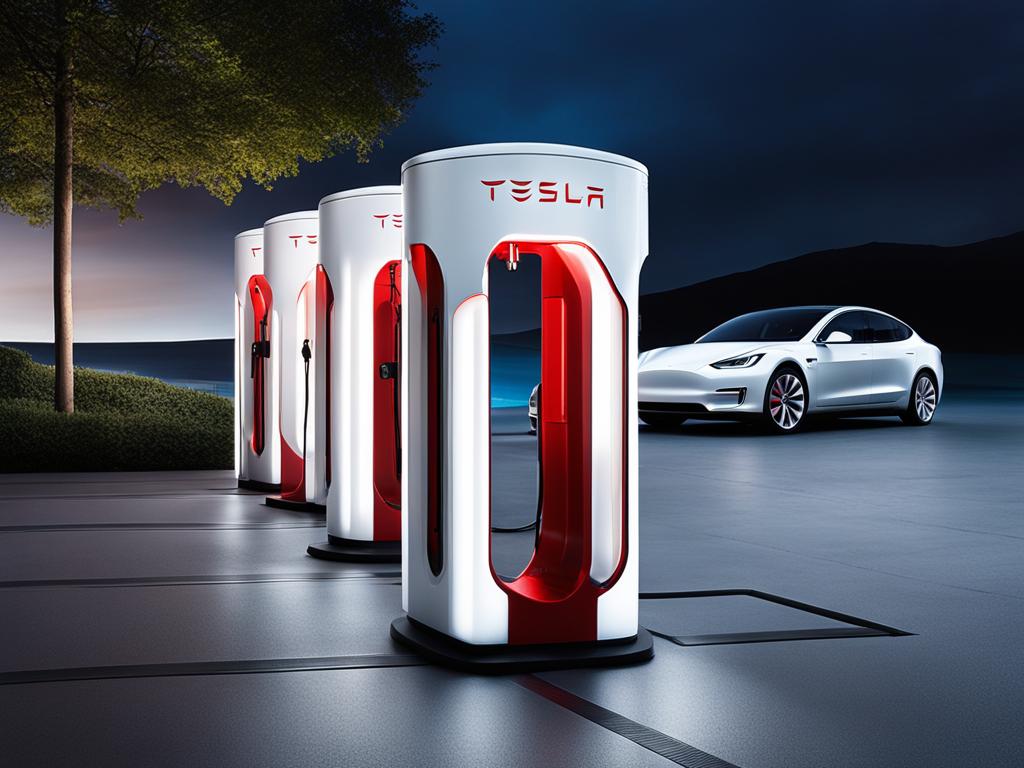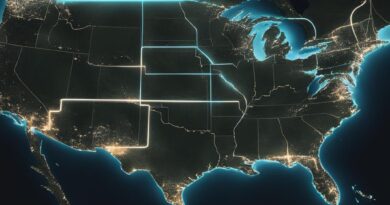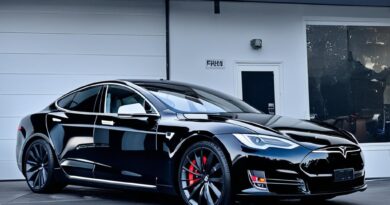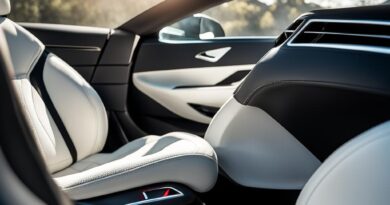Cost to Install a Tesla Charger Revealed
Are you considering installing a Tesla charger at your home or business? Understanding the cost associated with the installation is crucial for making an informed decision. In this article, we reveal the estimated cost of installing a Tesla charger and explore how it compares to the competition.
Key Takeaways:
- The cost of installing a Tesla Supercharger ranges from $100,000 to $175,000, depending on the station.
- Tesla covers all costs, including maintenance and power costs, for the installation of Superchargers at partner locations.
- Tesla’s grant application for non-Tesla Superchargers, submitted through the Texas Volkswagen Environmental Mitigation Program, was not successful.
- Compared to competitors, Tesla’s Superchargers are significantly more cost-effective, with some charging networks paying over $200,000 for their charging stations.
- Partnering with Tesla for Supercharger installation can provide businesses with increased foot traffic, media exposure, and association with Tesla’s brand.
Tesla’s Grant Application for Non-Tesla Superchargers
Tesla, a leading name in electric vehicles (EVs) and charging infrastructure, has been actively expanding its Supercharger network across the United States. In a bid to further enhance the charging network for all-electric vehicles, not just Teslas, the company applied for grants through the Texas Volkswagen Environmental Mitigation Program (TxVEMP).
Unfortunately, Tesla’s grant application for non-Tesla Superchargers did not receive approval, and the exact reason for this decision remains unclear. Despite the setback, the application process shed light on a significant advantage Tesla holds in terms of cost when deploying new fast-charging stations.
Tesla’s grant application revealed that the company requested as little as $30,000 per charger, whereas most other applicants were seeking the maximum grant amount of $150,000 per charger. This stark difference in cost underscores Tesla’s ability to efficiently and economically deploy their charging infrastructure, maintaining a competitive edge in the market.
“Tesla requested as little as $30,000 per charger, while most other applications were requesting the maximum grant amount of $150,000 per charger.”
Despite not receiving grant funding for non-Tesla Superchargers, Tesla continues to demonstrate its commitment to expanding the charging network and supporting the widespread adoption of EVs. With their advantage in cost-efficiency, Tesla remains at the forefront of developing accessible and convenient charging solutions for electric vehicle owners.
Cost Comparison: Tesla Superchargers vs Competition
When it comes to cost, Tesla’s Superchargers hold a significant advantage over their competition in the charging industry. While some competitors are spending over $200,000 for their charging stations, Tesla keeps the cost of their Superchargers significantly lower. In fact, Tesla’s Superchargers cost no more than $43,000 per charger.
Other prominent players in the industry, such as EVgo and Chargepoint, are also applicants for the grant program. However, their charging stations come with a much higher price tag. This cost comparison clearly highlights Tesla’s ability to provide affordable charging infrastructure while maintaining their leadership position in the industry.
To put these numbers into perspective, let’s take a closer look:
| Company | Charging Station Cost |
|---|---|
| Tesla | $43,000 |
| Competition A | $200,000+ |
| Competition B | $200,000+ |
| Competition C | $200,000+ |
As you can see from the table, Tesla’s Superchargers offer a significant cost advantage over the competition. This cost efficiency contributes to Tesla’s ability to rapidly expand the Supercharger network and provide accessible charging infrastructure to electric vehicle owners.
With their cost advantage, Tesla is able to prioritize the growth and accessibility of their Supercharger network, ultimately benefiting EV drivers and promoting the adoption of electric vehicles on a larger scale.
Partnering with Tesla for Supercharger Installation
Installing Tesla Superchargers at partner locations provides a unique opportunity for prospective hosts and property owners to offer a convenient charging solution for Tesla drivers. What sets this partnership apart is that Tesla covers all costs associated with the Supercharger installation, including maintenance and power expenses.
Property owners interested in becoming a Tesla Supercharger host are not required to make any monetary commitment upfront. However, there are certain installation requirements that need to be met. Hosts must provide between four to five parking spaces for the Supercharger and allocate approximately 200 to 600 square feet of space for the installation and equipment.
When entering into an agreement with Tesla, most hosts can expect a minimum commitment of five years, with options to extend the partnership. This long-term commitment ensures a reliable charging infrastructure for Tesla drivers and offers stability for the host business.
Partnering with Tesla for Supercharger installation brings several benefits for property owners. Firstly, it creates an association with the prominent Tesla brand, attracting Tesla drivers to their businesses and potentially increasing customer foot traffic. Additionally, hosts may benefit from media exposure, as the installation of a Tesla Supercharger can generate local interest and press coverage.
By collaborating with Tesla, property owners have the opportunity to contribute to the advancement of electric transportation and be part of the sustainable future.

Partnering with Tesla for Supercharger installation allows property owners to offer a valuable service to Tesla drivers while aligning with a renowned brand and gaining media exposure.
Usage and Installation Process
Tesla Superchargers are highly utilized, with some installations seeing as many as 17 sessions per day during peak usage periods. This high usage rate serves as a compelling argument for businesses considering the installation of a Supercharger, as it indicates increased traffic to their stores.
The installation process for a Supercharger typically takes between 12 and 20 weeks to complete. On-site construction, including the installation of the charger itself, can be completed in as little as two to four weeks. The remaining time is dedicated to paperwork, business arrangements, and obtaining the necessary local permits and approvals.
During the installation timeline, Tesla handles all paperwork and associated administrative tasks, ensuring a smooth process for both the property owner and Tesla. This includes securing any required local permits and approvals, ensuring compliance with regulations and zoning requirements.
Installation Timeline Breakdown:
The installation process for a Tesla Supercharger can be broken down into the following stages:
- Preparation and planning: Includes site evaluation, power supply assessments, and determining the optimal location for the charger installation.
- Permitting and paperwork: Involves obtaining the necessary local permits, approvals, and paperwork to ensure compliance with local regulations and zoning requirements.
- On-site construction: Includes the physical installation of the Supercharger and associated equipment. This process typically takes two to four weeks.
- Testing and inspection: Ensures that the Supercharger meets all safety and quality standards. This includes rigorous testing of the charger’s functionality and thorough inspections.
- Finalization and activation: Involves the completion of all necessary paperwork and agreements, as well as the activation of the Supercharger for public use.
By efficiently handling the installation process and assisting with all necessary paperwork, Tesla ensures a seamless experience for their partners. This enables property owners to benefit from the increased foot traffic and association with the Tesla brand without the burden of navigating complex installation processes or administrative tasks.
Local Permits and Approvals Required for Supercharger Installation
| Permit Type | Required for |
|---|---|
| Building Permit | Construction and installation of the Supercharger and associated equipment |
| Electrical Permit | Electrical connections and power supply for the Supercharger |
| Zoning Permit | Compliance with local zoning regulations and land use requirements |
| Environmental Permit | Environmental impact assessments and mitigation measures |
Conclusion
Installing a Tesla Supercharger may require a significant investment of construction time and space commitment, but the cost of installation is covered entirely by Tesla. Partnering with Tesla for Supercharger installation brings with it numerous benefits that make it a compelling opportunity for businesses.
One of the key advantages of partnering with Tesla is the association with their renowned brand. By having a Tesla Supercharger at their location, businesses can attract Tesla drivers, who are known for their preference for utilizing Superchargers. This increased foot traffic can lead to an uptick in customers and revenue, providing a valuable boost to local businesses.
In addition to the benefits of increased foot traffic, partnering with Tesla also offers businesses the opportunity for media exposure. Tesla’s Supercharger network is widely recognized and frequently covered by various media outlets. By being a part of this network, businesses can gain valuable attention and publicity, further enhancing their visibility and reputation.
While the initial investment and commitment may seem daunting, partnering with Tesla for Supercharger installation allows businesses to become pioneers in the future of electric transport. With Tesla’s commitment to covering all costs associated with installation and maintenance, businesses can embrace sustainable energy solutions and position themselves as leaders in their communities.
FAQ
How much does it cost to install a Tesla charger?
The cost of installing a Tesla charger, also known as a Supercharger, is estimated to be between $100,000 and $175,000, depending on the station. However, Tesla covers all costs associated with the installation, including maintenance and power costs.
What is the cost advantage of Tesla Superchargers compared to the competition?
Tesla’s Superchargers cost no more than $43,000 per charger, while some competitors in the charging industry are paying over $200,000 for their charging stations. Tesla’s cost advantage allows them to offer more affordable charging options.
Are there any grants available for installing non-Tesla Superchargers?
Tesla applied for grants through the Texas Volkswagen Environmental Mitigation Program to fund the installation of Superchargers that accept all-electric vehicles, not just Tesla vehicles. However, Tesla’s grant application did not make the cut.
What are the requirements for partnering with Tesla for Supercharger installation?
Property owners are not required to make any monetary commitment, but they must provide between four to five parking spaces and allocate around 200 to 600 square feet for the Supercharger and equipment. Most agreements involve a minimum commitment of five years, with options to extend.
How long does it take to install a Tesla Supercharger?
The installation of a Tesla Supercharger takes between 12 and 20 weeks to complete, with on-site construction taking only two to four weeks. The remaining time is dedicated to paperwork, business arrangements, and obtaining local permits and approvals.
What are the benefits of partnering with Tesla for Supercharger installation?
Partnering with Tesla for Supercharger installation offers various benefits, including the association with Tesla’s brand, increased foot traffic to businesses, and media exposure. Tesla stations see high usage rates, which can attract more customers to partner locations.




